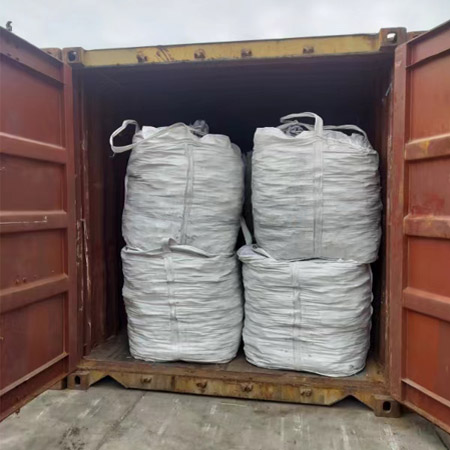The Global Position of Chinese Ferrosilicon Exporters
China ferrosilicon holds a dominant position in the global market, with global sales expected to reach US$10 billion in 2024. Chinese ferro silicon exports accounting for over 70% of the global market share. Major destinations of Chinese Ferrosilicon Exporter include Japan, South Korea, Southeast Asia (such as Malaysia, Vietnam, and Indonesia), the Middle East, Europe, and emerging markets such as India, Mexico, and Turkey. Export data shows that from January to February 2025, China exported 52,166,605 tons of ferrosilicon (silicon content >55%). And China exports of ferrosilicon with silicon content ≤55% were 5,004,520 tons. Despite the impact of tariffs, China’s total ferrosilicon exports from January to April 2025 reached 119,261,994 tons. Inner Mongolia, Ningxia, Qinghai, and Gansu are the primary ferrosilicon production regions in China.
Major Challenges Facing Chinese FeSi Exporters
One of the biggest challenges currently facing Chinese ferrosilicon exporters is tariff adjustments. In May 2021, China’s General Administration of Customs raised the export tariff on ferrosilicon to 25%. This policy directly increased export costs and weakened China’s price competitiveness in the international market. Some overseas demand shifted to other producing countries, such as India and South Africa. From January to April 2025, China’s ferrosilicon export value decreased by 26.38% year-on-year, reflecting a squeeze on profit margins

At the same time, the risk of international trade friction is increasing. European and American countries may launch anti-dumping investigations against Chinese ferrosilicon. If established, exporters will face additional tariffs or other sanctions. Furthermore, stricter domestic environmental protection policies have increased production costs. Major producing areas such as Inner Mongolia and Xinjiang must cope with the dual pressures of environmental protection constraints and energy restructuring.
Exporter Response Strategies and Development Trends
Faced with these challenges, Chinese ferrosilicon exporters are actively pursuing a diversified market strategy. Companies are increasing their efforts to explore emerging markets such as Southeast Asia, the Middle East, and Africa. For example, China’s total ferrosilicon exports to Malaysia increased by 52.5% year-on-year in 2024, demonstrating strong demand in Southeast Asian. Furthermore, companies are increasing added value through product upgrades. Such as increasing the export proportion of high-grade ferrosilicon (such as FeSi75), to mitigate the impact of tariffs. Anyang Highrise Metal Material Limited, a leading ferroalloy exporter, has successfully exported ferrosilicon and other related products to countries such as Japan and Vietnam, expanding its market and earning positive customer reviews.
Challenges and Chances of Ferrosilicon Exporter
In the future, with the deepening implementation of the Belt and Road Initiative and growing infrastructure demand in Southeast Asia, Chinese ferrosilicon exporters are expected to further expand into emerging markets. It is projected that by 2030, China’s ferrosilicon exports could increase from 380,000 tons in 2025 to 550,000 tons, particularly in countries such as Vietnam and Indonesia, where tariffs have been reduced to 3%-5%. Furthermore, intelligent transformation and green production technologies will help companies reduce energy consumption by 15%-20%, enhancing their long-term competitiveness.
As the world’s largest producer and exporter of ferrosilicon, China’s ferrosilicon exporters play a pivotal role in the international market. For the past few years, despite facing multiple challenges such as export tariff adjustments and intensified international market competition, Chinese ferrosilicon exporters have maintained strong international competitiveness through transformation and upgrading, market diversification, and policy support. In summary, despite facing short-term challenges, Chinese ferrosilicon exporters will maintain their important position in the global market through market diversification, product upgrades, and policy coordination. In the future, balancing cost control, compliance operations, and technological innovation will be key to achieving sustainable development for these companies.
